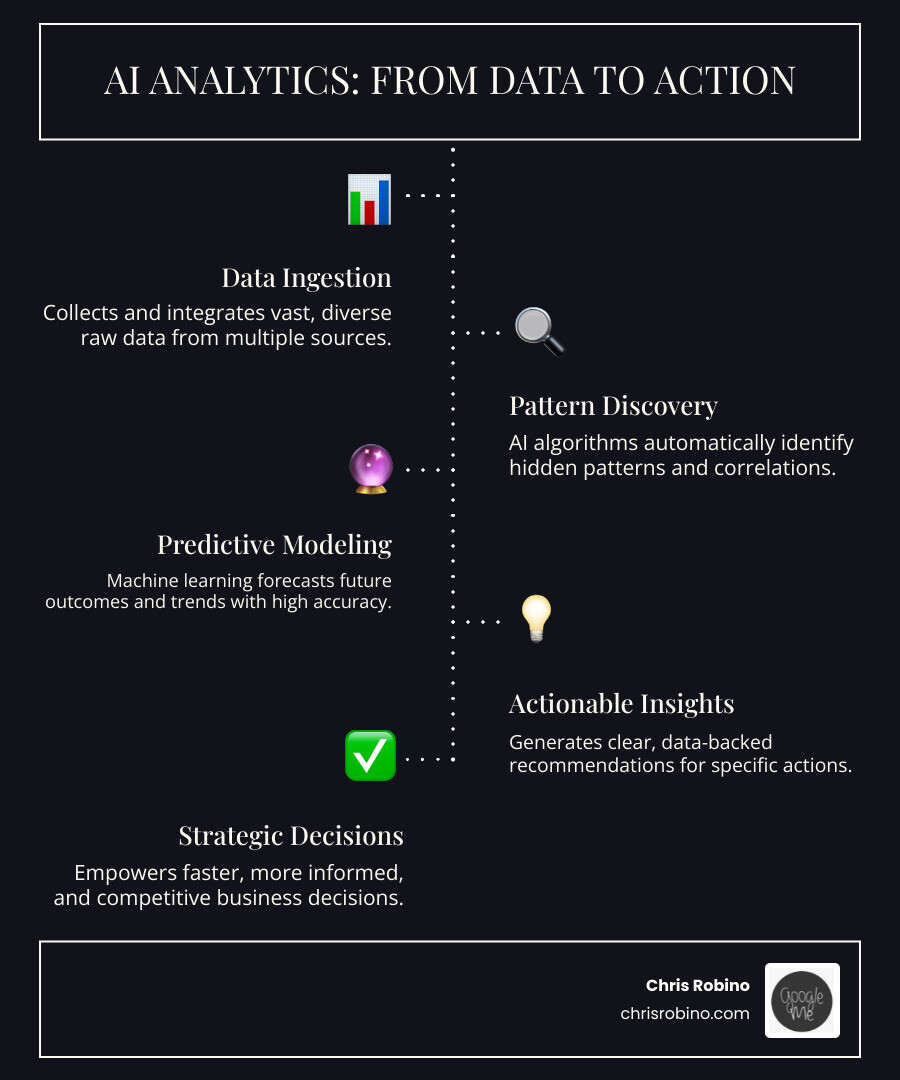Enterprise SEO at Scale: From Siloed Effort to Compounding Growth
Enterprise SEO is the discipline of building durable, compounding organic growth across thousands to millions of pages, products, and markets. For large companies, the playbook that works in a small site rarely scales. Success comes from treating SEO as a product, aligning marketing, product, engineering, analytics, and compliance in one operating system that turns search demand into measurable revenue at global scale.
What changes at enterprise scale?
- Volume and velocity: Millions of URLs, frequent deployments, and constant content updates create complexity. You need systems, not one-off fixes.
- Cross-functional dependency: Technical SEO touches architecture, rendering, performance, and data. Content SEO touches brand, legal, localization, and editorial. Orchestration matters as much as strategy.
- Governance and risk: Reputation, compliance, and consistency are paramount—especially for sensitive verticals. You must balance speed with safeguards.
When executed well, enterprise SEO lowers blended acquisition costs, compounds over time, and creates moats competitors struggle to cross. Companies that operationalize technical fixes, programmatic content, and robust internal linking typically see sustained lifts in non-brand traffic and revenue over 12–18 months, with better margin than paid channels and improved resilience to market shifts.
What actually drives results for large organizations?
- Technical foundations at scale: Crawl budget optimization, clean URL frameworks, robust canonicalization, and fast, reliable rendering across devices and markets.
- Information architecture built for discovery: Intuitive category hierarchies, smart facet controls, and hub-and-spoke content models that distribute authority.
- Programmatic and template-led content: High-quality, structured, and scalable content patterns that cover product attributes, locations, services, and FAQs without duplication.
- Entity and structured data strategy: Clear entity relationships and comprehensive schema to enhance understanding and eligibility for rich results.
- Internal linking systems: Automated and rules-driven linking that reinforces topical clusters and product relationships.
- Internationalization done right: Hreflang governance, market-specific relevance, and local-first optimization that avoids cannibalization.
- Measurement and governance: Source-of-truth dashboards, regular log-file and rendering audits, and release workflows that catch SEO regressions before they ship.
I’m Chris Robino. For two decades I’ve helped large organizations build SEO programs that scale—bridging strategy with engineering so teams can move fast without breaking search. The result is an engine that finds, fixes, and creates opportunities continuously, not just during quarterly planning.

The Core of Enterprise SEO: How It Works and Why It’s a Game-Changer
At its heart, enterprise SEO aligns how your site is built, how your content is produced, and how decisions are made. Traditional SEO explains what to optimize; enterprise SEO operationalizes it across teams, systems, and regions so you win at scale. It moves you from isolated tactics to an integrated growth program with shared KPIs.
Traditional vs. Enterprise SEO: A Fundamental Shift
| Feature | Traditional SEO | Enterprise SEO |
|---|---|---|
| Approach | Campaign- and keyword-led | Platform- and system-led |
| Focus | Individual pages and fixes | Templates, components, and sitewide patterns |
| Speed | Manual, one-off changes | Automated, rules-driven, CI/CD integrated |
| Scale | Dozens to hundreds of URLs | Thousands to millions of URLs, multiple markets |
| Ownership | Marketing-centric | Cross-functional (Product, Eng, Content, Legal) |
| Measurement | Channel metrics | Business metrics (revenue, CAC, LTV) with source-of-truth governance |
The Four Tiers of SEO Insight: Where to Apply Intelligence
- Descriptive (What’s happening?): Consolidate rankings, crawl stats, Core Web Vitals, and content coverage into enterprise dashboards that can be trusted.
- Diagnostic (Why is it happening?): Use log files, render testing, and template audits to pinpoint issues like parameter explosion, thin content, or JavaScript rendering gaps.
- Predictive (What’s likely next?): Forecast impact from migrations, template changes, or content expansions; prioritize backlogs by expected revenue lift and risk.
- Prescriptive (What should we do?): Turn insights into standardized playbooks, project tickets, and guardrails that drive repeatable execution across teams.
Key Capabilities and Techniques Behind Enterprise SEO
- Site architecture and crawl management: Flatten where appropriate, prune wasteful paths, control facets and parameters, and ensure canonical clarity.
- Rendering and performance: Server-side or hybrid rendering for critical content; Core Web Vitals optimized at the template and component level.
- Structured data and entity modeling: Comprehensive schema coverage and entity-first content that reinforces topical authority.
- Internal linking systems: Rule-based linking components, related-item modules, and hub pages that consolidate and distribute authority.
- Programmatic content: Template-led, high-quality pages at scale (e.g., product, location, service, and comparison pages) with strong UX and unique value.
- Content operations: Briefs, editorial standards, and review workflows (brand/legal/compliance) that maintain quality without slowing delivery.
- International and multilingual SEO: Hreflang governance, localized content beyond translation, market-specific taxonomies, and local link strategies.
- Governance and observability: CI/CD checks for robots and meta directives, XML sitemaps by segment, automated alerts for regressions, and regular log-file reviews.
- Privacy and analytics: Consent-aware tracking, data layer governance, and consistent attribution so SEO’s impact shows up in business reporting.
Real-World Impact: Enterprise SEO in Action

- Large e-commerce: Rebuild category and subcategory architecture, deploy scalable filters with safe indexation rules, enrich product templates with attributes and FAQs, and implement rules-driven internal linking. Results often include broader non-brand coverage and higher conversion from better intent matching.
- Marketplaces: Normalize duplicate supply, enforce canonical rules across variants, and improve profile completeness with structured data. Healthier crawl allocation and stronger entity signals lift long-tail findy.
- SaaS and B2B: Create documentation, solution, and integration hubs; comparison and alternatives pages with clear editorial standards; and a component library for consistent schema and CTAs. This fills the full-funnel content map and raises qualified inbound demand.
- Financial services and healthcare: Strengthen E-E-A-T through expert review workflows, transparent sourcing, and clear page ownership; tighten compliance guardrails in templates. This improves trust and eligibility for sensitive queries.
- News and media: Build evergreen topic hubs with freshness strategies, optimize article and author templates, and architect archives for findy without index bloat. Topical authority compounds while maintaining crawl efficiency.
The common thread: durable wins come from template-level improvements, scalable content systems, and governance that keeps improvements in place release after release.
Adopting and Evolving with Enterprise SEO

Navigating the Challenges and Limitations
- Data quality and attribution: Inconsistent tracking, missing consent, and siloed analytics hide impact. Establish a governed data layer and a single source of truth.
- Site sprawl and legacy debt: Migrations, outdated sections, and layered CMS history create crawl waste and duplication. Prioritize consolidation and redirect strategy.
- JavaScript and rendering pitfalls: Client-side rendering of critical content, hydration delays, and route handling can block discovery. Validate with log files and render tests.
- Facets, pagination, and parameters: Unbounded combinations create index bloat. Implement strict rules for indexation, linking, and canonicalization.
- International complexity: Hreflang misalignments, mixed language templates, and partial localization cause cannibalization. Centralize governance and QA.
- Compliance and brand safety: YMYL content needs expert review, clear authorship, and update discipline. Build this into workflows and templates.
- Organizational alignment: SEO regressions often ship from non-SEO teams. Add pre-release checks, clear owners, and automated alerts to your CI/CD.
The Next Wave: Generative and Agentic SEO
Generative tools accelerate briefs, metadata, and content outlines when guided by robust editorial standards and human review. They also help enrich entities, draft FAQs, and normalize large catalogs. Agentic workflows take this further by continuously monitoring sitemaps, logs, and templates; opening tickets when critical issues arise; and proposing prioritized fixes. The goal isn’t to replace experts—it’s to scale them with guardrails so teams act faster and with more consistency.
Practical applications include:
- Automated anomaly alerts for crawl errors, traffic shifts, and template regressions.
- Rules-driven internal linking updates when new hub or product pages launch.
- Programmatic metadata and snippet testing with controlled rollouts.
- Content gap identification and prioritized briefs aligned to revenue potential.
Your Roadmap to Adoption and Gaining a Competitive Edge
- Align on business goals: Tie SEO to revenue, CAC, and strategic initiatives (e.g., market entry, product expansion). Define success up front.
- Run an enterprise audit: Architecture, rendering, performance, content systems, international setup, and analytics. Quantify opportunity and risk.
- Establish governance: Owners, SLAs, pre-release checks, and approval workflows. Bake SEO into product and engineering rituals.
- Fix technical foundations: Canonicals, redirects, sitemaps by segment, robots rules, Core Web Vitals, and JS rendering of critical content.
- Build scalable content systems: Templates, component libraries, editorial standards, and QA that support quality at volume.
- Design internal linking at scale: Rule-based modules, hub structures, and cross-link patterns that reinforce topical clusters.
- Control facets and parameters: Define indexation rules, pagination standards, and crawl shaping to protect budget.
- Internationalize with intent: Market-specific taxonomies, localized content, robust hreflang, and local link acquisition.
- Instrument measurement: Consent-aware analytics, revenue attribution by landing page segment, and executive dashboards.
- Automate and alert: CI/CD checks, regression monitors, and anomaly detection so issues are caught before they impact revenue.
- Test and learn: Set up controlled experiments on templates and components; ship small, measure, and scale what works.
- Educate and enable: Train product, engineering, and content teams on SEO guardrails so velocity increases without introducing risk.
The organizations that win in enterprise SEO build an operating system—not a campaign. They codify best practices into templates and tooling, align teams around shared metrics, and continuously improve. Start with foundations, prove value through prioritized projects, and then scale the system that turns search demand into lasting growth.

